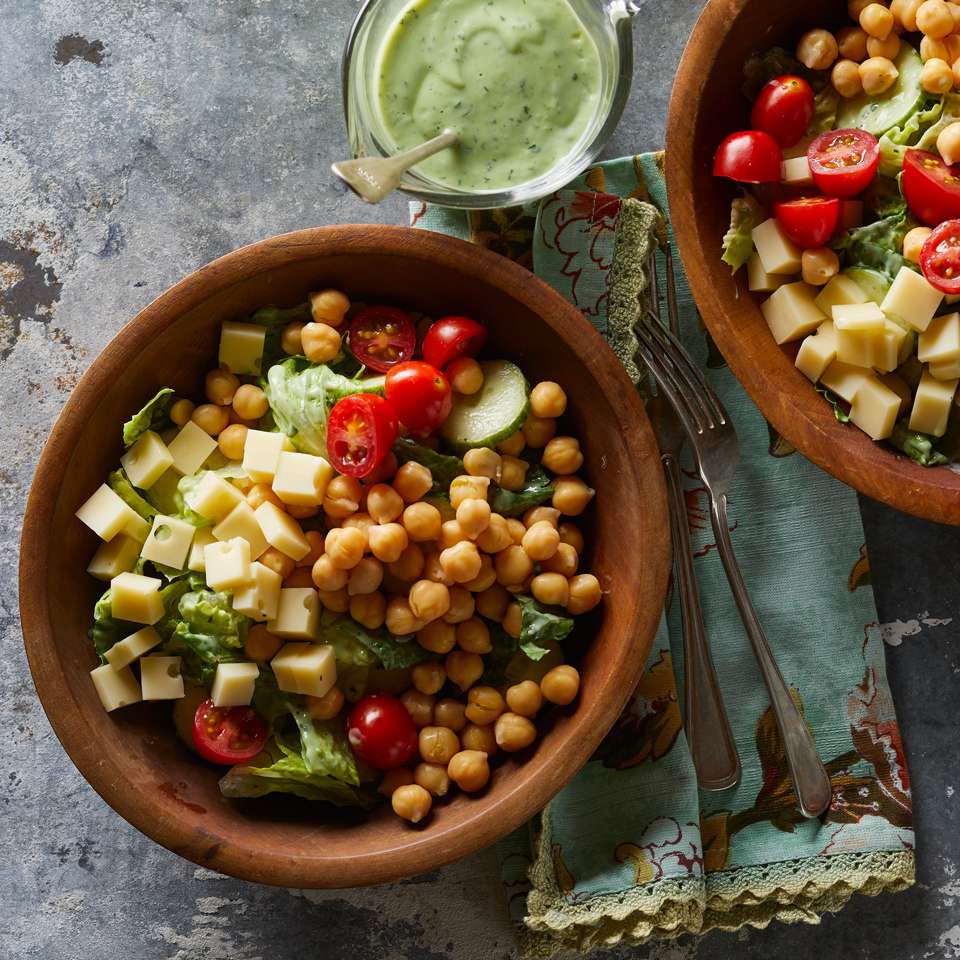How This Energy-Boosting Meal Plan Works
This meal plan is carefully crafted based on specific nutritional criteria to be both easy to follow and highly effective for boosting energy and satiety.
The Power of Protein and Fiber
The cornerstone of this plan is high protein. It prioritizes sources like chicken, eggs, Greek yogurt, legumes, cottage cheese, and fish. Protein is essential for sustained energy because it takes longer to digest than simple carbohydrates, keeping hunger at bay and preventing the energy crashes associated with high-sugar meals. Every day in this plan delivers a minimum of 90 grams of protein.
Equally important is fiber. Like protein, fiber digests slowly, providing a stable source of energy. Each day offers at least 34 grams of filling fiber. By combining high protein with high fiber, the plan ensures maximum satiety and sustained energy delivery.
Anti-Inflammatory Focus
To provide a broad spectrum of vital nutrients, the plan incorporates principles of an anti-inflammatory diet. Chronic low-level inflammation can contribute to fatigue and various health issues. This plan emphasizes foods rich in antioxidants and healthy fats, which are key to reducing inflammatory markers:
- Fruits: Especially berries, cherries, and citrus.
- Vegetables: Dark leafy greens, beets, broccoli, and winter squash.
- Healthy Fats: Olive oil, nuts, seeds, and fish.
- Fermented Dairy: Kefir and yogurt, which promote gut health.
Caloric Structure
This plan is set at 1,800 calories per day, with specific modifications provided for both 1,500 and 2,000 calories to accommodate diverse caloric needs.
Note on 1,200 Calories: We no longer include 1,200-calorie modifications. The 2020-2025 Dietary Guidelines for Americans suggest that restricting calories to 1,200 per day is often too low for most people to meet their nutritional needs and is unsustainable for long-term health and wellness. Not consuming enough calories is a primary cause of low energy.
Strategy: Quick Meal Prep for the Week
To ensure you stick to the plan and maximize your time, implement these simple meal prep strategies:
- Breakfast Prep: Prepare Sweet Potato Crust Mini-Quiches ahead of time to cover breakfast for the entire week.
- Lunch Prep: Make a large batch of Chickpea, Beet & Feta Salad with Lemon-Garlic Vinaigrette to serve as lunch for Days 2 through 5.
- Snack Prep: Whip up a batch of homemade Garlic Hummus for easy snacking throughout the week.
Sample Daily Breakdown (1,800 Calories)
| Meal | Calories (Approx.) | Key Components |
| Breakfast | 400 | Sweet Potato Crust Mini-Quiche (or similar high-protein/fiber start). |
| AM Snack | 215 | Avocado Tuna Salad or Low-Fat Plain Yogurt. |
| Lunch | 447 | Chickpea, Beet & Feta Salad (or similar protein-rich salad). |
| PM Snack | 194 | Garlic Hummus with Veggies (for fiber/healthy fats). |
| Dinner | 526 | Lean protein + anti-inflammatory sides (e.g., Salmon with roasted vegetables). |
| Daily Totals | ~1,778 kcals | 100g Protein, 34g Fiber |
Frequently Asked Questions (FAQ)
Is it okay to swap meals if I don’t like something?
Absolutely! The goal is sustainable health. Feel free to swap in other anti-inflammatory and high-protein recipes, ensuring your new choices fall close to the target of 1,800 calories, 90g protein, and 34g fiber.
Can I eat the same breakfast or lunch every day?
Yes, consistency can make adherence easier. The breakfasts average around 400 calories and the lunches between 384 and 447 calories. Sticking to one favorite option for either meal will maintain the nutritional balance of the overall plan.
What are anti-inflammatory foods?
Anti-inflammatory foods mirror the Mediterranean diet principles. They emphasize high intake of antioxidants, including diverse fruits (especially berries and citrus), dark leafy vegetables, nuts, seeds, fish, and healthy oils (like olive oil). They prioritize whole grains over refined grains and limit fried foods, added sugars, and processed meats.
Lifestyle Strategies for Maximizing Energy
While nutrition is paramount, energy levels are also significantly influenced by lifestyle habits. Incorporate these strategies for holistic vitality:
- Exercise Regularly: While fatigue makes movement difficult, physical activity is a potent energy booster. Even a brisk 7-day walking plan can jumpstart your metabolism and energy.
- Prioritize Sleep: The most obvious, yet most challenging, strategy. Aim for seven to nine hours of quality sleep nightly. Establish a peaceful bedtime routine free of blue light, and limit alcohol and caffeine close to bedtime, as both disrupt restorative sleep.
- Stay Hydrated: Dehydration is a common cause of fatigue. Sip water throughout the day and rely on hydrating, nutrient-rich foods like fruits and vegetables to support your fluid intake.
- Eat Smart and Consistent: Stick to a regular eating schedule to prevent energy dips. Focus on the combination of protein and fiber at every meal to maintain stable blood sugar and long-lasting energy.
By integrating this high-protein, anti-inflammatory meal plan with conscious lifestyle choices, you can effectively combat sluggishness and unlock sustained energy for a more active, focused life.
#Protheine #Matsatsi #Phahameng #Leano #Lijo #tse #Khahlanong #ruruha #Matla #Mangata #Entsoe #Setsebi #Lijo

